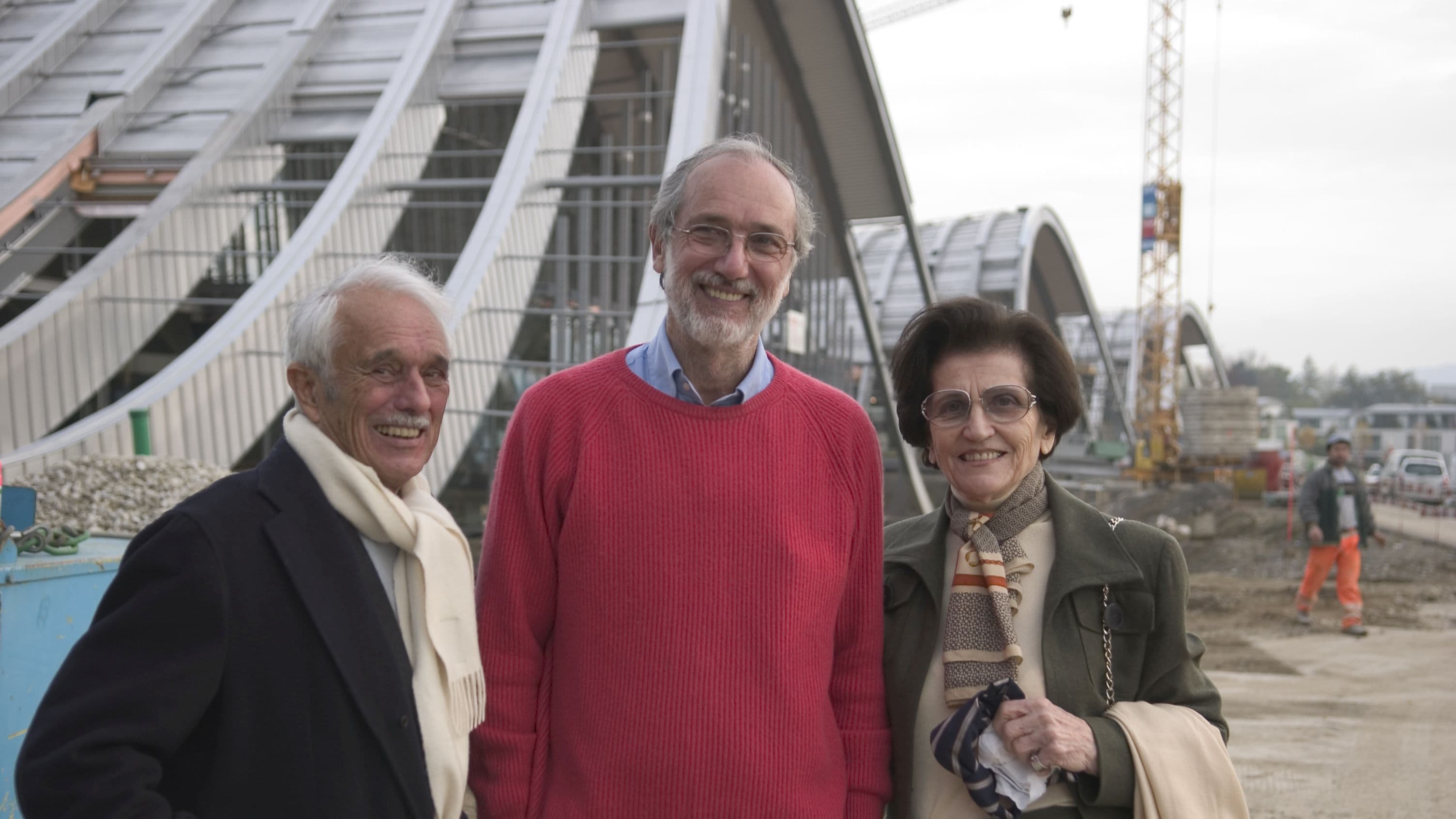Foundation of the Zentrum Paul Klee

The Zentrum Paul Klee opened on 20 June 2005. With the new cultural institution, Paul Klee was given a monument with international appeal in the city of Bern where he spent half of his life.
Livia Klee-Meyer, Alexander Klee and the Paul Klee Foundation
- In 1990, shortly after the unexpected death of his father Felix Klee, Alexander Klee informed the city and canton of Bern that the heirs agreed to offer large parts of Felix Klee's estate collection if a monographic museum dedicated to Paul Klee was created in Bern.
- In 1997, Livia Klee-Meyer, who was the daughter of Bauhaus director Hannes Meyer and Felix Klee's wife since 1980, made a donation offer to the city and canton of Bern. By accepting the donation, the public authorities came into possession of almost 700 works by Paul Klee and contracted into establishing a museum dedicated to Paul Klee by the end of 2006 at the latest and running it on a long-term basis.
- In 1998, Alexander Klee guaranteed the future institution around 850 loans and the donation of documents from the family's possessions by contract.
- In 1998, the world-famous orthopaedic surgeon Prof. Dr. med. Dr. h. c. mult. Maurice Edmond Müller and his wife Martha Müller-Lüthi offered both land in the Schöngrün quarter of Bern and the majority of their family fortune for the establishment of the Zentrum Paul Klee. The Maurice E. and Martha Müller Foundation was established for this purpose.
- In the same year, the Paul Klee Foundation announced its intention to merge with its holdings and extensive archives into the Zentrum Paul Klee.
By bringing together the aforementioned holdings and a further approximately 150 items on loan from private collections, the world's largest collection of works by a world-class artist, comprising around 40% of Paul Klee's entire œuvre, was created for the new museum.
My vision is a Paul Klee-Zentrum in Schöngrün. Here the museum could benefit from the vastness and the unique scenic atmosphere. Paul Klee himself was a great teacher. My greatest wish is that the Paul Klee Museum in Schöngrün should also have a research centre with associated classrooms. It is a cultural asset to invest in knowledge and art.
Prof. Maurice E. Müller at the press conference on 13 July 1998.
The Müller family
The Müller family's donations were essentially linked to three conditions:
- The location was to be Schöngrün in Bern, where Paul Klee's final resting place is located.
- Renzo Piano was to be commissioned with the construction.
- The new home of the Klee collection was not to be a traditional museum, but a cultural centre.
It is largely thanks to Prof. Maurice E. Müller, MD, PhD, who was celebrated in San Diego in August 2002 by SICOT (Société internationale de chirurgie orthopédique et de traumatologie) as Surgeon of the Century for his achievements and successes, and his wife Martha Müller-Lüthi, that a unique cultural institution of its kind has been created in Bern in the form of the Zentrum Paul Klee, which also includes a children's museum designed by Janine Aebi-Müller, the daughter of the founders, and a sculpture park donated by Martha Müller-Lüthi.
Public authorities
The Burgergemeinde Bern created the Paul Klee Foundation of the Burgergemeinde Bern to support special projects of the Zentrum Paul Klee. The City and Canton of Bern financed the development. The Zentrum Paul Klee Foundation is responsible for its operation. In total, the land on which the "landscape sculpture" Zentrum Paul Klee was to be built covered 90,000 m2.